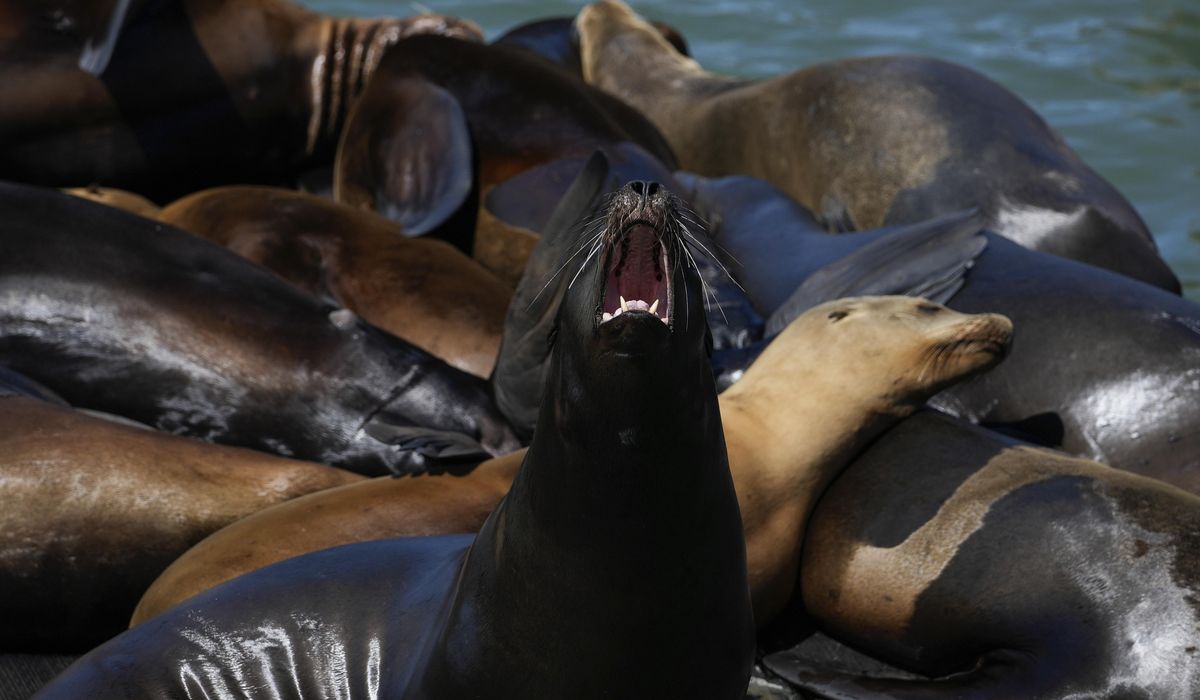


Almost 290 dead sea lion pups have washed up on Año Nuevo Island off the coast of northern California recently. Researchers are still working to find out why.
The spike in dead pups began a couple weeks ago, Año Nuevo State Park Director Patrick Robinson told USA Today.
About 50 were observed on May 7, with the number rising to 288 dead pups on May 14, according to an aerial survey of the island’s beaches.
“It almost looks like it’s kind of rained sea lion pups, and they get kind of picked apart by gulls and scavengers so it’s a bit of a battlefield almost. It’s a bit grim,” University of California, Santa Cruz graduate student and researcher George Colaco told KSBW-TV.
Mr. Robinson told USA Today that the area around Año Nuevo hosts a relatively new sea lion colony, and that about 700 to 800 sea lions were born on the island in recent years, with only a few dozen stillbirths.
In comparison, almost all of the pups that washed up on Año Nuevo were the results of abortive pregnancies that ended close to full term, researchers told KSBW-TV.
One theory is that an El Niño weather event affected the food supply and, with it, the pregnancy success of sea lion mothers in the population.
“My best guess is that we’re coming off of an El Niño event. That means that food links are down there, less food, there’s less fish in general,” UCSC Institute of Marine Science Director Daniel Costa told KSBW-TV, adding that the population is close to its maximum carrying capacity.
El Niño weather can cause prey species to change behaviors, leading sea lions to swim farther for food.
“Premature births are not uncommon with sea lions and often become numerous during El Niño periods when pregnant sea lions need to swim farther in search of shifting prey species,” National Oceanic and Atmospheric Administration spokesman Michael Milstein told USA Today.
Other environmental factors, infections or toxins also could be causing the deaths, UCSC veterinarian Megan Moriarty told the Los Angeles Times.
Ms. Moriarty said the dead pups were born a bit ahead of schedule and were not “fully baked.”
“They could just stay in a little bit longer … and probably if you could put them in an incubator and take care of them, they might survive,” she said, adding that, when necropsies are done, “you’ll see that the very last thing to develop fully are their lungs. … they’re just not quite fully developed enough to breathe on their own and to be successful.”
Without robust lungs, the pups cannot lift their heads up to nurse.
One toxin, domoic acid, a neurotoxin, travels up the food chain from the algae that produce it, to the plankton that feed on the algae, to the fish that eat the plankton and then to the sea lions that prey on the fish.
“Adult females comprise 60% of stranded animals admitted for rehabilitation due to acute domoic acid toxicosis and commonly suffer from reproductive failure, including abortions and premature live births,” according to a 2009 study published in the National Library of Medicine.
• Brad Matthews can be reached at bmatthews@washingtontimes.com.
